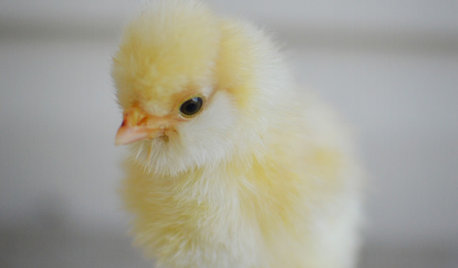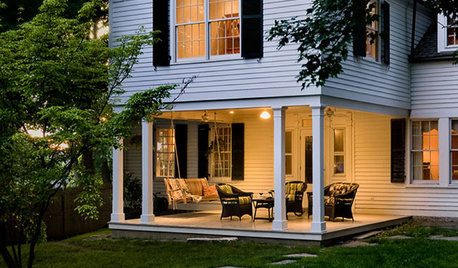newbie - plan for sick lawn in dayton, oh
oh_julie
15 years ago
Related Stories

EARTH DAYThe Case for Losing the Traditional Lawn
Work less, help the environment and foster connections by just saying no to typical turf
Full Story
GREAT HOME PROJECTSHow to Replace Your Lawn With a Garden
New project for a new year: Lose the turfgrass for energy savings, wildlife friendliness and lower maintenance
Full Story
LAUNDRY ROOMS7-Day Plan: Get a Spotless, Beautifully Organized Laundry Room
Get your laundry area in shape to make washday more pleasant and convenient
Full Story
HOUSEKEEPINGChoose Your Own Spring Cleaning Plan
Instead of trying to do it all, pick one of these six cleaning approaches that’s right for you now
Full Story
SAVING WATERXeriscape Gardens: How to Get a Beautiful Landscape With Less Water
Conserve water and make gardening much easier with the xeriscape approach’s 7 principles
Full Story
PETSWhat You Need to Know Before Buying Chicks
Ordering chicks for your backyard coop? Easy. But caring for them requires planning and foresight. Here's what to do
Full Story
NATIVE PLANTS5 Ways to Keep Your Native Plant Garden Looking Good All Year
It’s all about planning ahead, using sustainable practices and accepting plants as living organisms
Full Story
ECLECTIC HOMESHouzz Tour: A Storybook House for the Neighborhood
This charming family home incorporates Tudor-style elements, eclectic details and smart planning
Full Story
MOST POPULARA Fine Mess: How to Have a Clean-Enough Home Over Summer Break
Don't have an 'I'd rather be cleaning' bumper sticker? To keep your home bearably tidy when the kids are around more, try these strategies
Full Story
SELLING YOUR HOUSEThe Latest Info on Renovating Your Home to Sell
Pro advice about where to put your remodeling dollars for success in selling your home
Full StorySponsored






oh_julieOriginal Author
oh_julieOriginal Author
Related Professionals
Clark Landscape Architects & Landscape Designers · Franconia Landscape Architects & Landscape Designers · Signal Hill Landscape Architects & Landscape Designers · Shenandoah Landscape Contractors · Cincinnati Driveway Installation & Maintenance · Charlottesville Swimming Pool Builders · Lisle Swimming Pool Builders · Missouri City Swimming Pool Builders · Weatherford Swimming Pool Builders · Branford Fence Contractors · Gardena Fence Contractors · Homestead Fence Contractors · Spring Fence Contractors · Tempe Fence Contractors · East Palo Alto Fence Contractorssoccer_dad
dave11
dave11
oh_julieOriginal Author
oh_julieOriginal Author
dave11
soccer_dad
Kimmsr
oh_julieOriginal Author
bpgreen
Kimmsr
soccer_dad
oh_julieOriginal Author
bpgreen
oh_julieOriginal Author
dave11
oh_julieOriginal Author
dave11
bpgreen
dave11
bpgreen
dave11
rdak
dchall_san_antonio